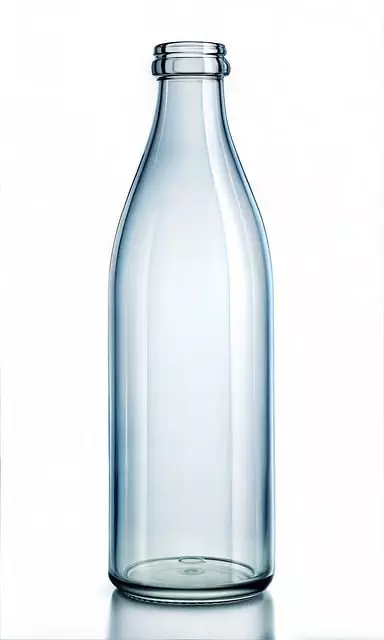Fragile packaging solutions, driven by the need for product protection and environmental sustainability, have evolved with custom approaches using eco-friendly materials. Key components like foam inserts offer tailored cushioning for diverse items, from electronics to art. Businesses now access biodegradable foams and recycled materials, ensuring product safety while minimizing ecological impact. Customization, leveraging advanced technologies and expert collaboration, is crucial in the e-commerce sector, where brands like luxury perfume and tech leaders adopt these practices for enhanced security and consumer appeal, aligning with growing demands for sustainable packaging.
In today’s world of e-commerce, ensuring product integrity during transit is paramount. Fragile packaging with foam inserts offers a robust solution for protecting delicate items, from glassware to electronics. This comprehensive guide explores various aspects of this innovative approach, including the benefits and challenges of fragile packaging solutions, customization options, eco-friendly alternatives, best practices, and inspiring case studies. Discover how tailored foam insert packaging can enhance product safety while meeting sustainability goals.
- Understanding Fragile Packaging and Its Challenges
- The Role of Foam Inserts in Protecting Delicate Items
- Customization: Creating Tailored Fragile Packaging Solutions
- Eco-Friendly Alternatives: Sustainable Fragile Packaging Options
- Best Practices for Implementing Effective Fragile Packaging Systems
- Case Studies: Success Stories in Fragile Packaging with Foam Inserts
Understanding Fragile Packaging and Its Challenges
Fragile packaging, as the name suggests, refers to specialized shipping containers designed to safeguard delicate or fragile items during transit. These solutions are tailored to protect products that are susceptible to damage, ensuring they reach their destination in pristine condition. From electronics and glassware to fine art and antiques, various industries rely on fragile packaging to mitigate risks associated with handling and transportation.
One of the primary challenges in the realm of fragile packaging is balancing protection and sustainability. Many traditional packaging materials, though effective, contribute to environmental concerns. This has spurred the demand for eco-friendly fragile packaging solutions. Today, businesses have access to a range of custom fragile packaging options that not only offer robust protection but also adhere to environmental standards. These innovative solutions employ recyclable and biodegradable materials, addressing both the need for effective shielding and the growing call for sustainable practices in packaging.
The Role of Foam Inserts in Protecting Delicate Items
Foam inserts play a pivotal role in protecting delicate items within fragile packaging solutions, ensuring their safe arrival at their destination. These customizable fragile packaging materials are designed to absorb shock and prevent damage during transit, making them an indispensable component for shipping sensitive goods. With precision-cut shapes and various densities, foam inserts fill the voids inside boxes, acting as a protective cushion that minimizes movement and reduces the impact of sudden jolts or drops.
When it comes to eco-friendly fragile packaging, manufacturers are increasingly turning to sustainable alternatives for both the packaging and its insulative elements. Biodegradable foams made from renewable resources offer an excellent solution, combining effectiveness with environmental responsibility. This shift towards custom fragile packaging options not only ensures the security of fragile items but also aligns with the growing demand for sustainable practices in various industries.
Customization: Creating Tailored Fragile Packaging Solutions
In today’s world, where consumer expectations are high and environmental considerations are at the forefront, customization plays a pivotal role in creating effective fragile packaging solutions. Businesses no longer settle for one-size-fits-all approaches when it comes to protecting their products during transit. Custom fragile packaging allows companies to cater to unique product shapes, sizes, and delicate nature, ensuring safe delivery. By utilizing advanced technologies and materials, manufacturers can produce eco-friendly fragile packaging that is not only sustainable but also highly specialized.
This customization process involves intricate design work, precise cutting, and strategic placement of fragile packaging solutions, such as foam inserts. These inserts are tailored to cradle and protect products within the packaging, minimizing movement and reducing the risk of damage during handling. Customization also extends to the outer layers, where specialized cardboard or paper materials can be engineered for enhanced durability and board strength, further securing the fragile contents inside.
Eco-Friendly Alternatives: Sustainable Fragile Packaging Options
In the quest for more sustainable practices, the search for eco-friendly fragile packaging solutions has gained momentum. Traditional foam inserts often contribute to environmental concerns due to their non-biodegradable nature. However, a plethora of new options are emerging, offering businesses and consumers alike custom fragile packaging alternatives that are both kind to the planet and effective in protecting products during transit.
From recycled paper and cardboard to innovative plant-based foams, these fragile packaging solutions cater to diverse product needs while minimizing environmental impact. Businesses now have the opportunity to embrace sustainability without compromising on product integrity, ensuring a greener approach to eco-friendly fragile packaging.
Best Practices for Implementing Effective Fragile Packaging Systems
When implementing a fragile packaging system, adhering to best practices ensures product safety and customer satisfaction. Start by understanding your products’ specific needs. Different items require tailored protection; for instance, glassware necessitates shock absorption, while delicate electronics need padding and air cushioning. Custom fragile packaging solutions are key to achieving this precision. Collaborate with experts to design inserts that conform to item shapes, preventing movement during transit.
Additionally, consider the environmental impact. Many traditional fragiles use petroleum-based foams, contributing to waste. Opting for eco-friendly fragile packaging materials, such as biodegradable or recycled foams, reduces your carbon footprint. This not only aligns with sustainability goals but also appeals to environmentally conscious consumers. Remember, effective and responsible packaging begins with these thoughtful considerations.
Case Studies: Success Stories in Fragile Packaging with Foam Inserts
In the realm of e-commerce, where speed and safety go hand in hand, case studies showcasing successful implementations of fragile packaging with foam inserts are aplenty. These real-world examples highlight how innovative and custom fragile packaging solutions can protect delicate items while also being environmentally conscious. Many brands have adopted eco-friendly fragile packaging materials, such as biodegradable foams, to reduce their carbon footprint without compromising product safety.
For instance, a leading luxury perfume manufacturer utilized customized foam inserts designed to cradle glass bottles securely during transit. This approach not only minimized damage but also enhanced the overall unboxing experience for customers. Similarly, a tech startup packing fragile electronics relied on sustainable foam materials to prevent shocks and cracks, ensuring their products arrived in pristine condition. These success stories underscore the effectiveness of foam inserts in providing robust fragile packaging solutions while aligning with growing consumer demands for eco-friendly alternatives.


